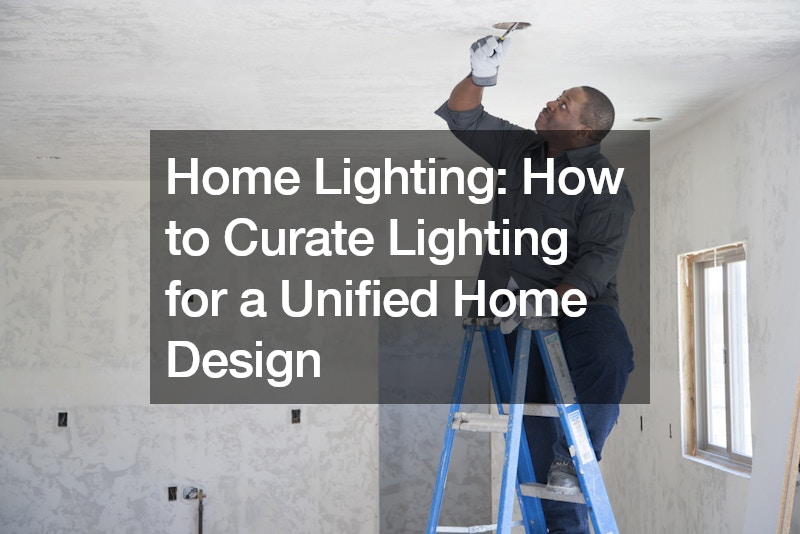
Lighting plays a pivotal role in shaping the ambiance and functionality of our living spaces. From creating a cozy atmosphere in the living room to enhancing productivity in the home office, the right lighting can truly transform a house into a home. In this guide, we’ll delve into the art of curating lighting for a unified home design, ensuring consistency and harmony throughout every room.
Understanding the Importance of Consistent Lighting
Consistency in lighting design is key to achieving a cohesive and harmonious look in your home. Just like coordinating furniture and decor, ensuring that your lighting fixtures complement each other can significantly elevate the overall aesthetic appeal of your living space.
Consistent lighting helps tie different areas of your home together, creating a seamless flow from room to room.
Crafting a Lighting Plan
Before diving into the world of lighting fixtures, it’s essential to develop a comprehensive lighting plan for your home. Start by assessing the natural light sources in each room, such as windows, skylights, and rooflights. Understanding how natural light interacts with your space will guide your decisions when selecting artificial lighting options.
Mixing Finishes for Visual Interest
While matching all your lighting fixtures may seem like the easiest route, mixing finishes can add depth and visual interest to your home design. Experiment with combinations of metals such as brass, bronze, nickel, and black to create a curated look that reflects your personal style. Remember to maintain a cohesive theme throughout your home by ensuring that the finishes complement each other harmoniously.
Exploring Different Shade Styles
Shade styles play a significant role in defining the aesthetic appeal of your lighting fixtures. Whether you prefer classic linen shades or modern geometric designs, choosing complementary shade styles can enhance the overall coherence of your lighting design. Mix and match shades to add texture and variation while maintaining a unified look across all rooms.
Finding the Right Size
When it comes to lighting fixtures, size matters. A common mistake homeowners make is selecting fixtures that are either too small or too large for their space. Take into account the dimensions of each room and choose fixtures that are proportionate to the scale of the area. In areas with high ceilings, opt for statement pieces that can fill the vertical space and create a dramatic effect.
Smart Lighting Integration
Smart lighting systems offer a new level of convenience and control for homeowners, allowing them to adjust lighting settings remotely via smartphone apps or voice commands. By integrating smart bulbs or switches into your home design, you can create custom lighting schedules, set mood lighting for different occasions, and even enhance home security by simulating occupancy when you’re away. With features like dimming capabilities and color-changing options, smart lighting adds versatility and ambiance to any room while streamlining daily routines.
Practical Considerations: Specs and Placement
Beyond aesthetics, practical considerations such as specs and placement are crucial aspects of lighting design. Ensure that the dimensions and specifications of your chosen fixtures align with the electrical infrastructure of your home. Consult with a professional electrician to determine the optimal placement of lighting fixtures for optimal illumination and functionality.
Creating a Unified Look
The key to curating lighting for a unified home design lies in finding a balance between consistency and variety. While it’s essential to maintain a cohesive theme throughout your home, don’t be afraid to incorporate elements of contrast and diversity. Mix different styles, shapes, and sizes to add personality and character to your living spaces while ensuring that all elements come together harmoniously.
Utilizing Natural Light Sources
Incorporating natural light sources such as windows, skylights, and rooflights can enhance the overall lighting scheme of your home. Rooflights, in particular, are an excellent addition for bringing in abundant natural light and creating a sense of openness and spaciousness. Strategically position rooflights to maximize daylight penetration and minimize the need for artificial lighting during the day.
Seasonal Lighting Considerations
As daylight patterns change throughout the year, adjusting your home lighting accordingly can help maintain comfort and functionality in your living spaces. During the darker winter months, supplementing natural light with additional fixtures or brighter bulbs can combat seasonal affective disorder (SAD) and create a cozy atmosphere indoors. In contrast, in the brighter summer months, dimmable lights or sheer curtains can help regulate light levels and prevent glare while still allowing ample natural light to enter your home. By adapting your lighting scheme to the seasons, you can optimize comfort and energy efficiency year-round.
Final Thoughts
Curating lighting for a unified home design is a rewarding endeavor that can significantly enhance the look and feel of your living space. By prioritizing consistency, mixing finishes and shade styles, and considering practical factors such as size and placement, you can create a lighting scheme that not only illuminates your home but also elevates its overall aesthetic appeal. With careful planning and attention to detail, you can transform your home into a well-lit haven that reflects your unique style and personality.
.

